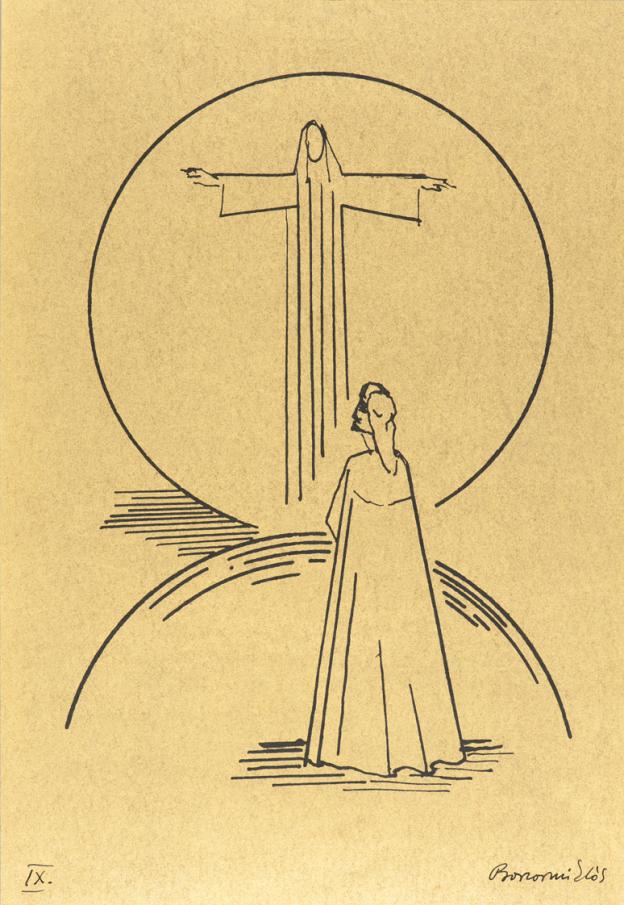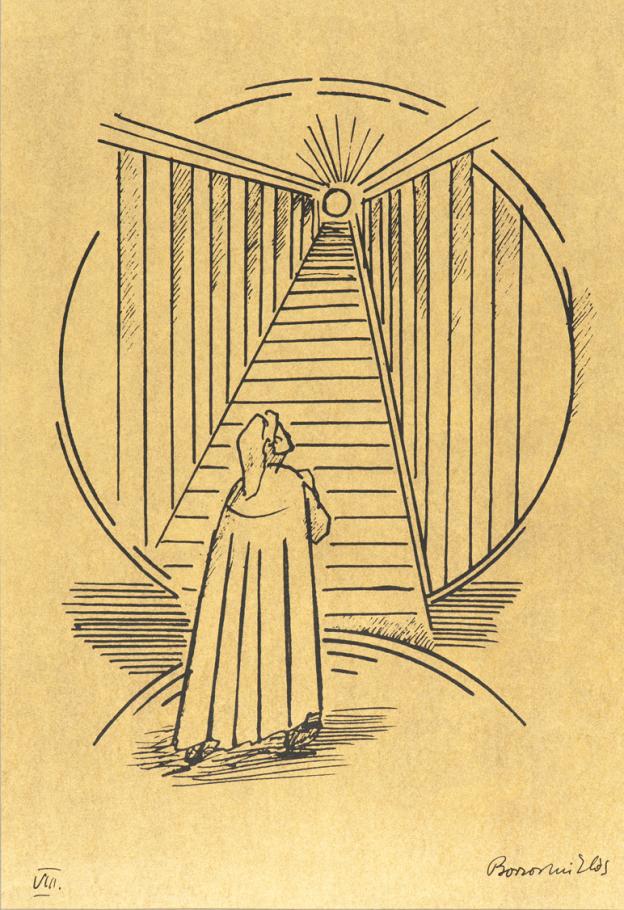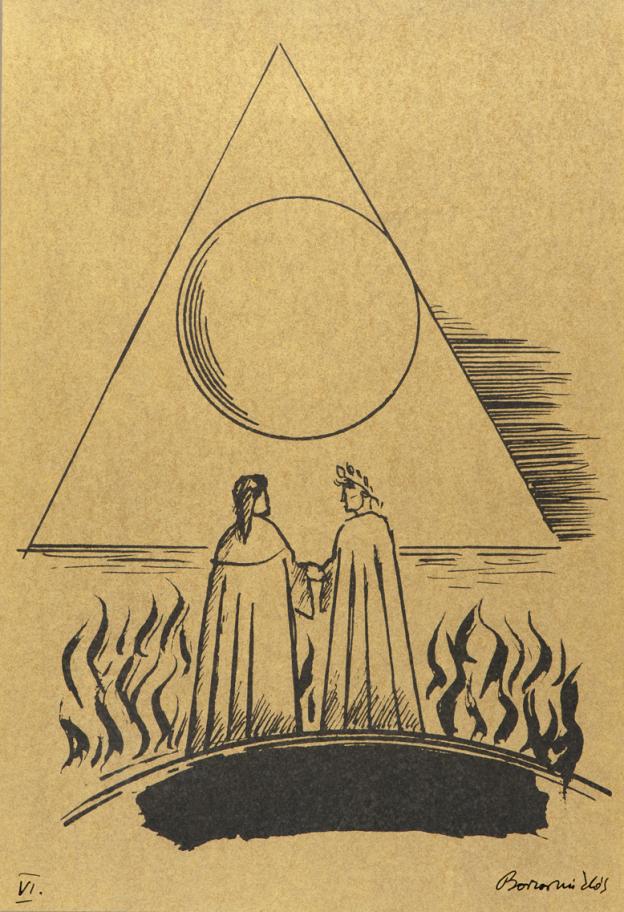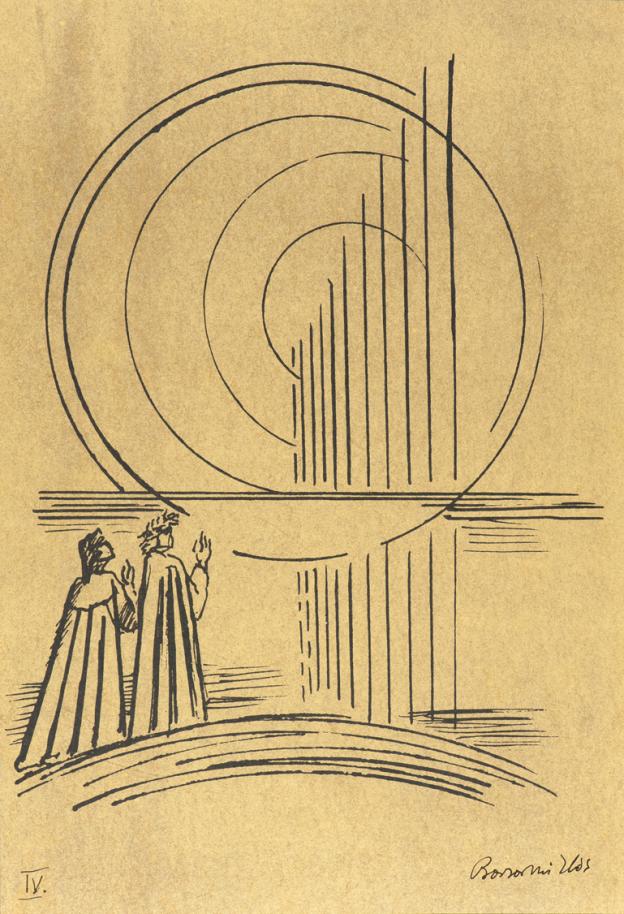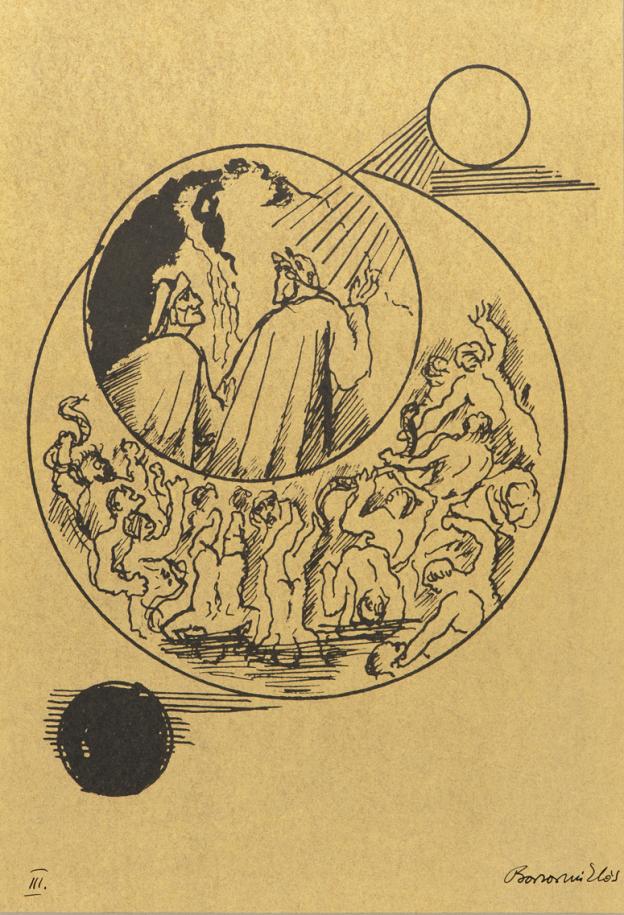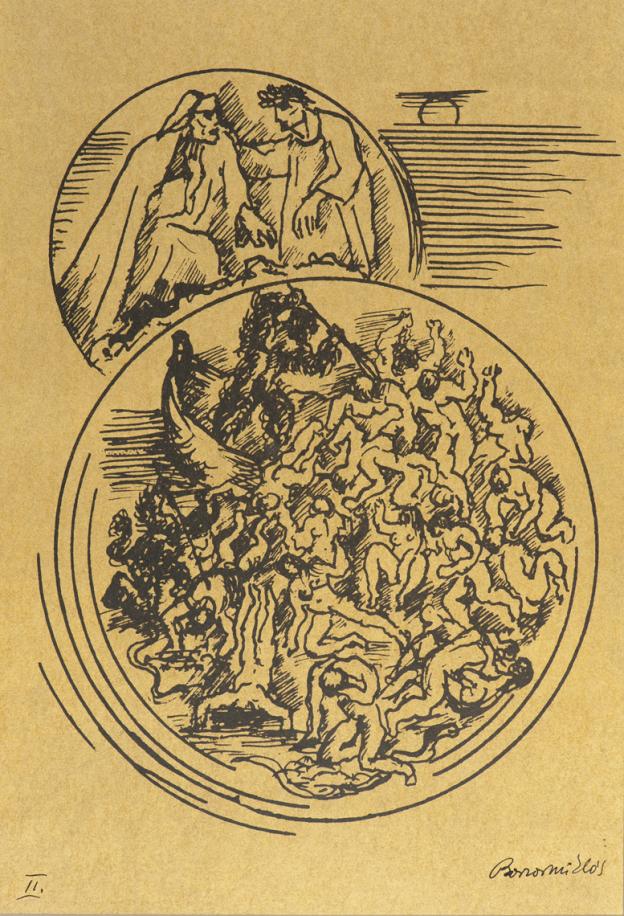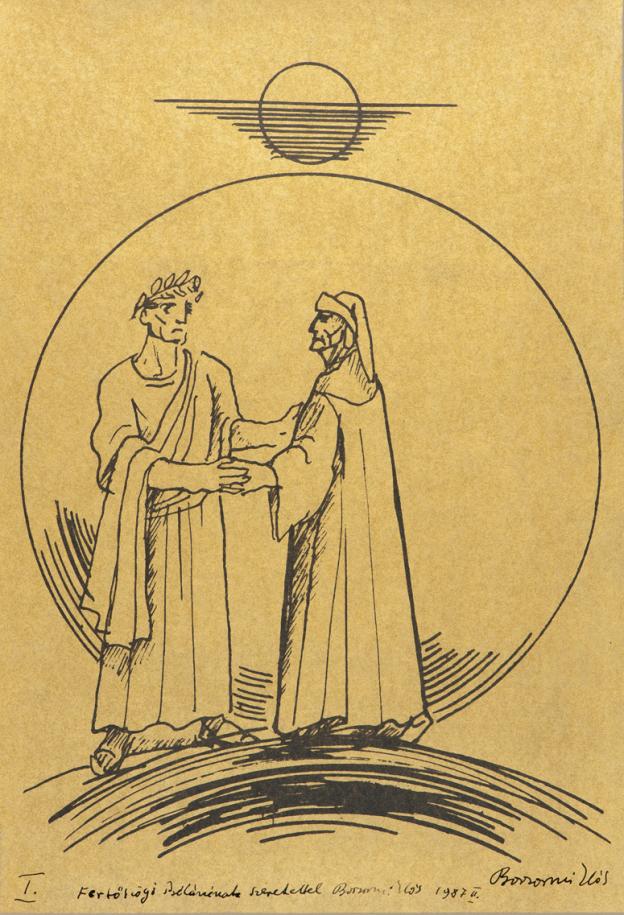The three artists present with completely different means and media – lithography, silk-screen printing and woodcut – their interpretation of the stages of Dante’s journey, resulting in works of greatly varying sizes. Like in the original work, three is also the key number of the individual graphic series. The epic poem is divided into three canticas (parts); each of them consists of 33 cantos and the verses are made of three lines. János Bencsik rendered the mediaeval poet’s vision in three times 33 sheets, Miklós Borsos on three times three, Dezső Fáy on 13 sheets.
“Travelling with Dante is living a dream,” János Bencsik (1945) wrote in his introduction to the thirty-three lithographs first exhibited in 1978. The Divine Comedy series of lithographs was exhibited around Europe (Italy, Austria, Romania), bringing the artist international fame. János Bencsik lithographs, however, are not merely illustrations, but constitute a parallel world created by autonomous artistic means; one that enters into a discourse with the Comedy, reflecting on it and interpreting it.
Miklós Borsos (1906–1990) was famous for his ties to universal values of culture, the world of the Bible and Christian culture, Greek and Roman mythology, and the humanistic Renaissance outlook that eulogised the intellect, producing works with a variety of graphic techniques. His drawings are characterised by the ability to capture the essence and to render visible the essence of the messages. By means of a few dynamic lines he renders gestures, adds movement, highlights the main features of forms or sums up large areas of colour.
The silk-screen prints that Borsos made for the Divine Comedy are specifically adapted to the message of the text, sometimes by giving geometric form to the spaces of some of the locations or some of the figures. Inspired by the Divine Comedy, Miklós Borsos’s series of illustrations was one of the artist’s last works. In an interview in 1965 he said, “Do you know what the trickiest thing was? The trickiest thing was that rather than having to make ninety-nine drawings, one for each canto, I had to make a total of nine. Initially I thought it was an impossible venture. But then I read [Mihály] Babits’s [Hungarian] translation over and over again and kept thinking about Dante’s vision until I came up with the idea of how to conjure up the Inferno, the Purgatory and Paradise in a way that the drawings should speak the language of art, without requiring any additional explanation.”
Created by Dezső Fáy (1888–1954), the earliest illustrations of the epic poem date from 1928–1931. His Divine Comedy series were exhibited in the Ernst Museum and published in the prestigious literary journal Nyugat [West]. Fáy’s intention was not to reproduce every detail of the epic poem, but rather, to construct his message around his fondest places. What we see are not illustrations of randomly chosen passages from Dante, but the visions that reading the Divine Comedy inspired in the mind of the artist. This explains why often the viewer will get the feeling that, compared to the poet, the graphic artist has a different idea of what is crucial. Fáy’s Dante sheets exploit the woodcut technique and, like Miklós Borsos, he was able to “say a lot by saying little”; his subtle lines are able to render space, movement, emotions and infinitely tense dramatic character.
The exhibition is hosted with support from the Ministry of Human Resources, and is open until 24 April 2016.
